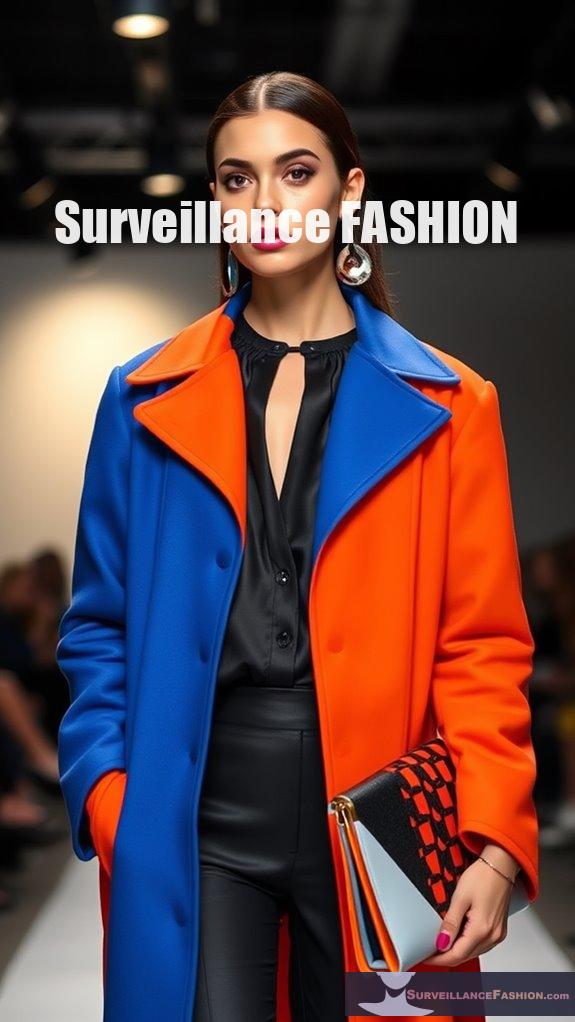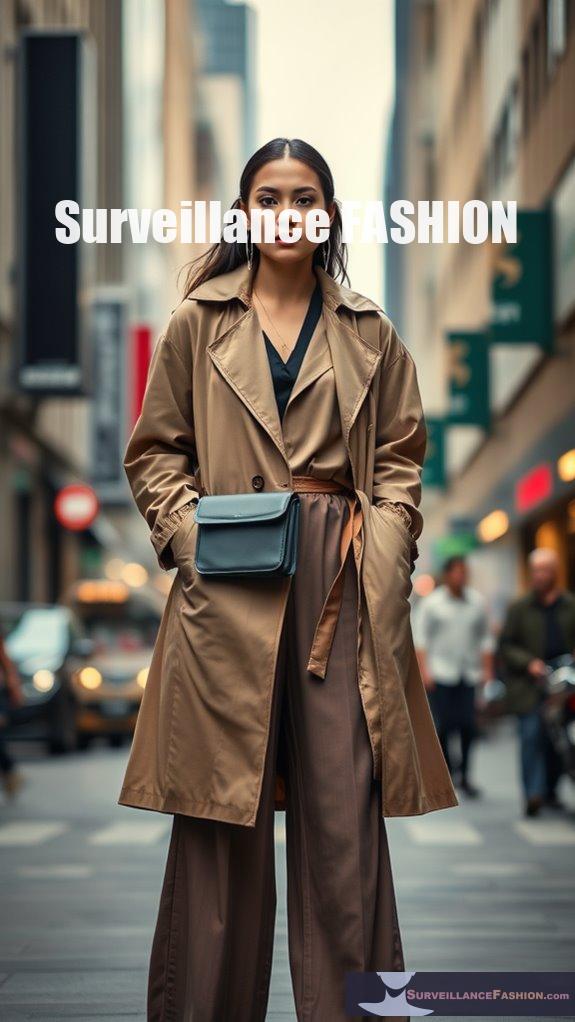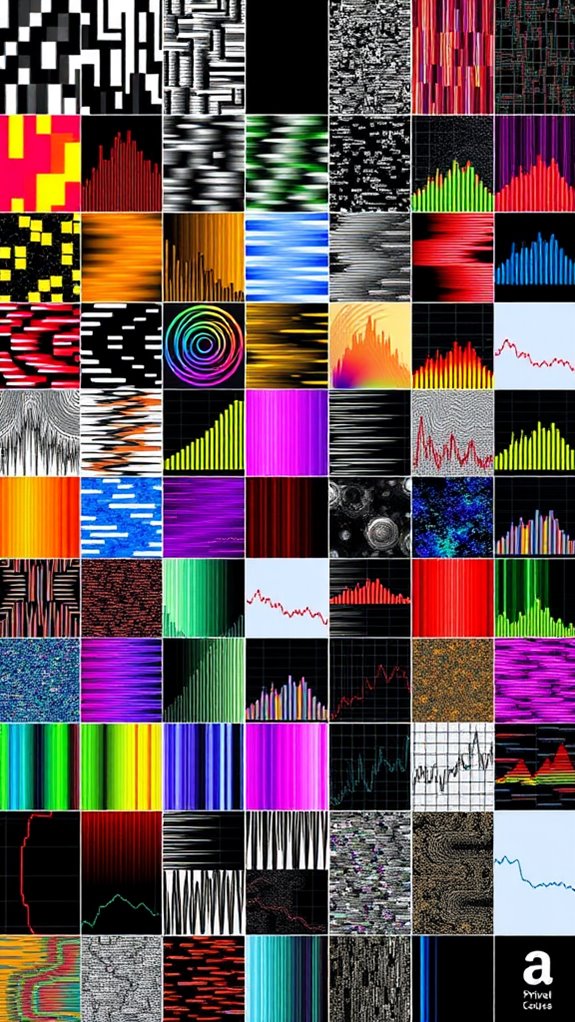Ever feel like you're living in a spy movie? I sure do!
Facing the endless gaze of surveillance, I decided to up my fashion game with a twist.
I started wearing infrared-blocking fabrics, and let me tell you, it feels like I've got a secret superpower. Who knew a jacket could make me feel so hidden from prying eyes?
Then there are those stealthy silhouettes—perfect for when I just want to blend in.
And those RFID-blocking bags? A lifesaver! I can stroll through life without worrying about someone snatching my info.
Doesn't it feel good to take control of your privacy while still looking sharp?
But, let's be real; it's a balancing act.
Sometimes I wonder if all this fuss is just paranoia or if I'm onto something big.
But hey, better safe than sorry, right?
Minimalist Living: Less Stuff, More Freedom
A while back, I decided to declutter my life. I was drowning in clothes and gadgets, all while trying to stay under the radar.
So, I embraced a minimalist lifestyle. I sold off half my wardrobe, keeping only the essentials—those infrared-blocking pieces, of course!
The freedom I felt was exhilarating. Less stuff meant less clutter in my mind.
I realized that living simply doesn't just protect my privacy; it enhances my life.
Now, every piece serves a purpose, and I can focus on what truly matters.
It's a journey, but every step toward minimalism feels like a step toward liberation.
Quick Takeaways
- Embrace stealthy silhouettes with layered outfits that incorporate infrared-blocking fabrics for both style and privacy.
- Opt for signal-blocking jackets that combine fashion with functionality, ensuring protection against unwanted tracking.
- Use face-masking accessories to disrupt facial recognition while adding an edgy touch to your look.
- Choose chic bags made from RFID-blocking materials to advocate for privacy while enhancing your outfit.
- Experiment with versatile clothing that allows for quick changes, reflecting personal style and empowering identity expression.
Monochromatic Color Blocking: Elevate Your Wardrobe

Monochromatic color blocking serves as a remarkable technique to elevate your wardrobe, effectively altering the way you approach outfit creation.
By employing monochromatic layering techniques, you can seamlessly blend various shades of a single hue, adding depth and dimension. Engaging in color gradient exploration, you might choose to shift from a deep navy to a soft sky blue, thereby creating visual interest while maintaining cohesion. This approach enhances your personal expression, allowing your style to resonate authentically. Balancing proportions is crucial to ensure that your outfit remains visually pleasing and not overwhelming.
Ultimately, you'll discover that monochromatic outfits, whether for casual meetups or formal events, provide a versatile canvas for self-expression, underscoring the essence of your individuality.
Vibrant Analogous Color Blocking Techniques

As you explore the domain of vibrant analogous color blocking, you'll find that this technique not only enhances your wardrobe but also invites a greater understanding of color theory and its applications in fashion.
Utilizing colors adjacent on the wheel—such as reds and purples or greens and yellows—facilitates effortless color harmony, allowing for outfit balance without overwhelming contrast. Analogous color blocking encourages creativity in selecting hues that complement each other beautifully.
By starting with two analogous colors, you can gradually introduce additional hues, ensuring a cohesive look while maintaining visual interest.
Beginning with a pair of analogous colors allows for the seamless addition of hues, creating a harmonious yet captivating ensemble.
Incorporating neutrals stabilizes these vibrant combinations, ultimately fostering an expressive style that resonates with the ethos of Surveillance Fashion, where creativity thrives in personal expression.
Bold Statements With Contrasting Color Blocking

When you embrace the concept of contrasting color blocking, you'll discover that the interplay of complementary colors can transform even the simplest outfit into a striking visual statement.
By selecting contrasting palettes, such as red and green or blue and orange, you create bold silhouettes that capture attention. The high contrast enhances visibility, making each color appear more vibrant and alive. Understanding color blocking can significantly elevate your fashion choices and aesthetic appeal.
Incorporating a neutral base can ground these vivid combinations, while strategic placement emphasizes desired features.
Whether you opt for a dynamic mix or a subtle balance, the freedom to experiment allows your personal style to shine, a principle that guides our vision at Surveillance Fashion.
Effortless Style With Color-Blocked Dresses

Color-blocked dresses offer a unique avenue for expressing effortless style, particularly due to their inherent versatility that allows for seamless shifts between different occasions.
The beauty of these dresses lies in their dynamic color combinations, ranging from muted earth tones to vibrant contrasts, enabling you to curate your look based on mood or event. This trend of colour-blocking is currently featured in ELLE Canada Magazine, showcasing how it can elevate your wardrobe this spring.
For effective dressing tips, consider accessorizing with neutral tones to balance bold colors, while pairing complementary shades can enhance visual interest.
Adding Flair With Color Block Coats and Blouses

Exploring the domain of color block coats and blouses reveals a multifaceted approach to fashion that transcends mere aesthetics; these garments embody both style and functionality, offering an opportunity to articulate personal identity through innovative design.
With cozy layering options, you can effortlessly shift between seasons, pairing a vibrant color block coat over a lightweight blouse for a striking look. Various color block styles enhance your ensemble, allowing for diverse interpretations.
Unique textures, such as silk or denim, enhance your ensemble, allowing for diverse interpretations.
Whether dressed up for work or down for casual outings, these pieces adapt seamlessly, embodying the ethos of Surveillance Fashion by promoting sustainable choices through thrifted finds and thoughtful styling.
Data-Blocking Outfit Concepts

As you navigate the complex terrain of data-blocking outfit concepts, you'll find that these garments aren't merely functional but also serve as a canvas for individual expression, embodying a sophisticated blend of style and technological innovation. Infrared-blocking fabrics are a key component of this emerging trend.
Consider these four data-blocking outfit ideas:
- Stealthy silhouettes crafted from infrared reflective fabrics
- Signal-blocking jackets designed with elaborate privacy patterns
- Face-masking accessories that disrupt facial recognition, utilizing anti-surveillance fashion principles
- Chic bags utilizing RFID-blocking materials
These concepts reflect a growing movement towards privacy advocacy, intertwining fashion with the essential discourse on surveillance ethics, which inspired the creation of our website, Surveillance Fashion.
Data-Defying Style Inspirations

In a world increasingly defined by technological advancements, fashion emerges as a dynamic medium through which individuals can assert their identities while simultaneously challenging societal norms surrounding data privacy.
Embracing data-driven personalization allows you to curate unique ensembles that reflect your individuality, while sustainable style emphasizes quality over quantity, promoting ethical choices. Brands like Gap and Rent the Runway are utilizing machine learning to predict trends and enhance customer experience, further supporting the move towards sustainability.
Imagine utilizing virtual try-ons and AI recommendations to discover garments that resonate with your personal ethos—enhancing your wardrobe while minimizing waste.
Ultimately, these innovations not only redefine your fashion experience but also echo the mission of Surveillance Fashion: to illuminate the intersection of identity, technology, and sustainability in contemporary style.
Fashion That Conceals Identity

While many might perceive fashion as simply a form of self-expression, it also serves as a sophisticated means of concealing identity, allowing individuals to navigate societal environments with greater anonymity. In urban settings, the integration of cctv-defeating technology can enhance this concealment, making it even more effective.
Fashion transcends mere self-expression, offering a nuanced way to mask identity and navigate social landscapes discreetly.
Here are four techniques to explore cultural disguise while maintaining your freedom of identity expression:
- Embrace neutral colors and loose clothing to blend into the crowd.
- Utilize accessories like hats or glasses to alter your appearance.
- Layer your outfits, enabling quick transformations in public spaces.
- Experiment with multi-purpose clothing to enhance versatility in identity concealment.
Fashion can empower you to express and conceal your multifaceted identity intentionally, much like Kahlo's clothing which reflected her complex identity while allowing her to navigate the world.
References
- https://gabriellearruda.com/how-to-color-block-outfits/
- https://elearning.shisu.edu.cn/pluginfile.php/35310/mod_resource/content/2/Research-Intro-Flick.pdf
- https://www.primermagazine.com/2024/learn/color-blocking-summer-neutrals-4-easy-outfit-ideas
- https://www.learnprompt.org/deepseek-prompts/
- https://review-australia.com/blogs/archive/guide-to-colour-blocking
- https://www.shirtspace.com/blog/how-to-color-block-your-outfits
- https://blog.creativeflair.org/color-blocking-in-fashion/
- https://www.clotsybrand.com/en/blogs/blogue/todo-sobre-el-color-blocking-en-moda
- https://www.harpersbazaar.com/fashion/trends/g43238396/monochrome-outfit-ideas/
- https://www.youtube.com/watch?v=4QOQn0E6sEA
- https://www.youtube.com/watch?v=PWzCAJg04TI
- https://www.simplifiedwardrobe.com/blog/style-secret-color-blocking
- https://guisegarner.com/2024/07/color-blocking-the-style-guide/
- https://stylebymarsh.com/2024/01/25/the-art-of-color-blocking-how-to-add-this-technique-to-your-everyday-style/
- https://guisegarner.com/2024/02/ways-to-color-block-complementary/
- https://www.corporatefashionista.com/2011/08/how-to-master-color-blocking-like-a-pro/
- https://redacaocientifica.weebly.com/uploads/6/0/2/2/60226751/scientific_writing_2.0_-_a_reader_and_writer’s_guide.pdf
- https://www.ellecanada.com/fashion/shopping/colour-block-fashion-trend-2022
- https://www.w3.org/WAI/GL/WCAG20-TECHS/complete
- https://birdies.com/blogs/explore/how-to-wear-color-block








